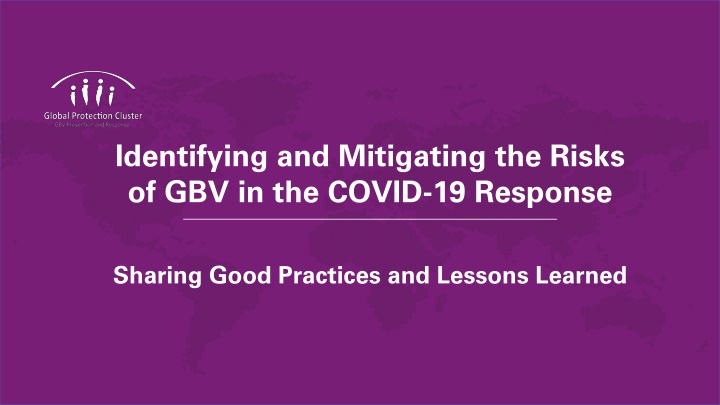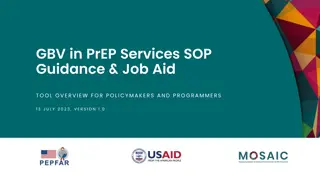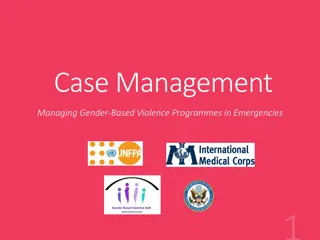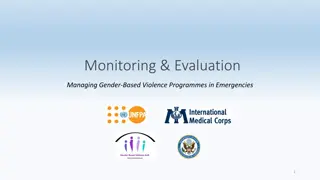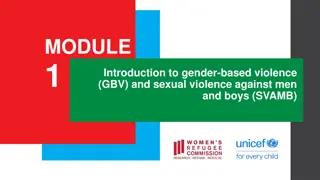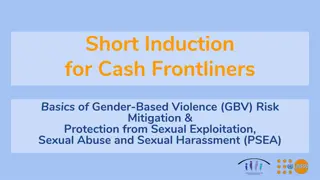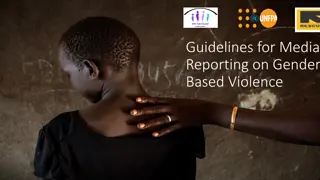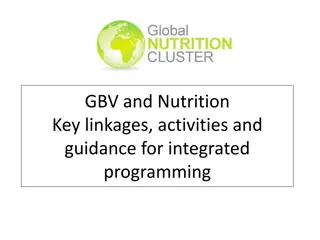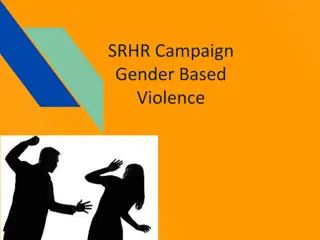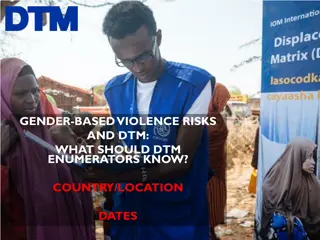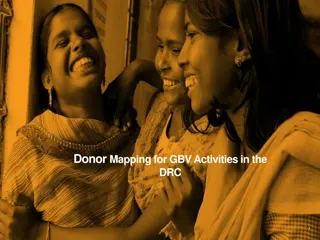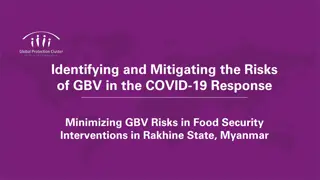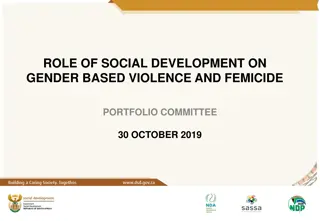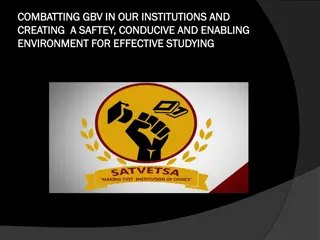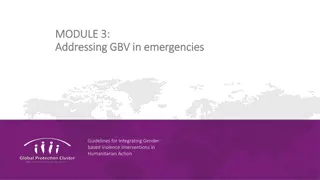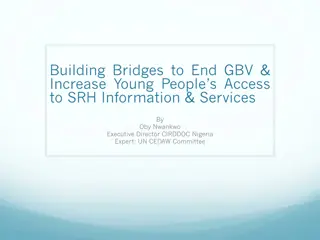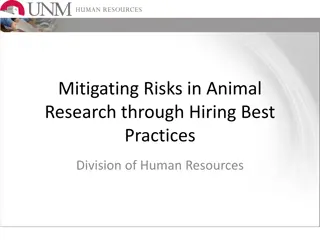Mitigating Risks of GBV in COVID-19 Response: Best Practices
Sharing strategies to address Gender-Based Violence risks during COVID-19 response, including data findings, gender disaggregation of coping mechanisms, coordination meetings, SOPs for handling GBV cases, protection assessments, communication strategies, and community feedback mechanisms.
Download Presentation

Please find below an Image/Link to download the presentation.
The content on the website is provided AS IS for your information and personal use only. It may not be sold, licensed, or shared on other websites without obtaining consent from the author.If you encounter any issues during the download, it is possible that the publisher has removed the file from their server.
You are allowed to download the files provided on this website for personal or commercial use, subject to the condition that they are used lawfully. All files are the property of their respective owners.
The content on the website is provided AS IS for your information and personal use only. It may not be sold, licensed, or shared on other websites without obtaining consent from the author.
E N D
Presentation Transcript
Identifying and Mitigating the Risks of GBV in the COVID-19 Response Sharing Good Practices and Lessons Learned
Brief Introduction of the Project/Challenge Brief Introduction of the Project/Challenge Senatorial ZoneRound 20 August (Round 21) Data collected by WFP and partners through remote monitoring on emergency negative coping mechanisms categorised as (Illegal Activities which includes theft and transactional sex) to meet food security needs: (July) Adamawa Central 7% 23% Usage of these strategies is highest persistently most pronounced in Borno North, Yobe East and Yobe South, where more than one in every five households (> 20 percent) reported the use of these strategies either within 30 days or 12 months preceding the mVAM assessment; Adamawa North 8% 1% Adamawa South 0% 1% Borno Central 20% 12% Increased trend in the usage of these strategies reported in Adamawa Central and Yobe South between July to September 2020; Borno North 29% 19% Borno South 9% 0% Findings suggest worrisome trends in most areas of the northeast except for Adamawa North, Adamawa South, Borno South and Yobe North, where prevalence in the usage of these coping strategies was consistently lower than 10 percent in the months under review. Yobe East 29% 15% Yobe North 0% 0% Yobe South 25% 27% Guidelines for Integrating Gender-based Violence Interventions in Humanitarian Action
GBV Risks and Issues Addressed 1. 1. Age and gender disaggregate the negative coping mechanisms Age and gender disaggregate the negative coping mechanisms. This is essential and will provide us with enough information about at-risk groups. 2. Weekly coordination meetings with food security, CBT, SCOPE, protection and M&E teams. 3. Develop and disseminate clear guidance (SOPs) on how to handle cases of GBV and other protection cases related to the design (including registration approach) and implementation of activities 4. Conduct protection and gender assessments to inform the targeting and transfer modality in areas where WFP is planning to scale-up or implement the protection score-card and monitor M&E findings in areas where operations are ongoing. 5. Communicate, Communicate, Communicate 6. Strengthen community feedback mechanisms Guidelines for Integrating Gender-based Violence Interventions in Humanitarian Action
Results and/or Key Lessons Learnt 1. Allow and organize for extensive consultations of affected populations (women, men, girls and boys with and without disabilities) prior to finalizing the design of the activity. 2. Make time for REPRESENTATIVE community consultation and integrate the feedback. 3. Coordinate with GBV and protection actors to conduct protection risk and gender assessments. 4. 4. Develop clear communication for affected populations on targeting and Develop clear communication for affected populations on targeting and entitlements. Ensure the messaging is adapted to language diversity and entitlements. Ensure the messaging is adapted to language diversity and circulated through multiple channels. circulated through multiple channels. 5. Strengthen community feedback mechanisms. 6. Develop clear guideline and procedures for the referral of GBV cases for food assistance and to combat discrimination of women headed households and other at-risk groups who face barriers in accessing assistance. Guidelines for Integrating Gender-based Violence Interventions in Humanitarian Action
